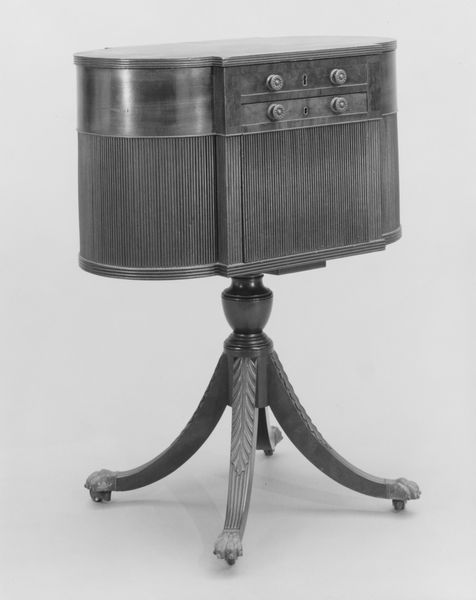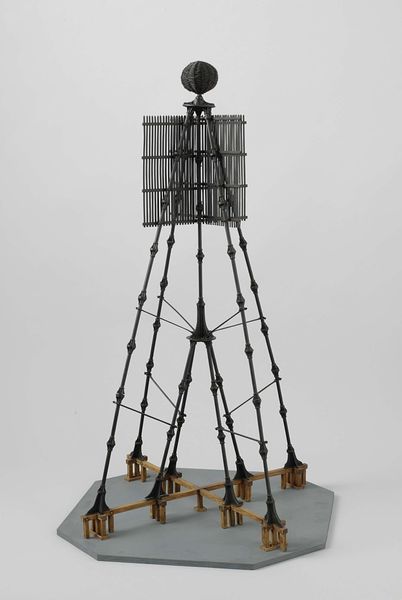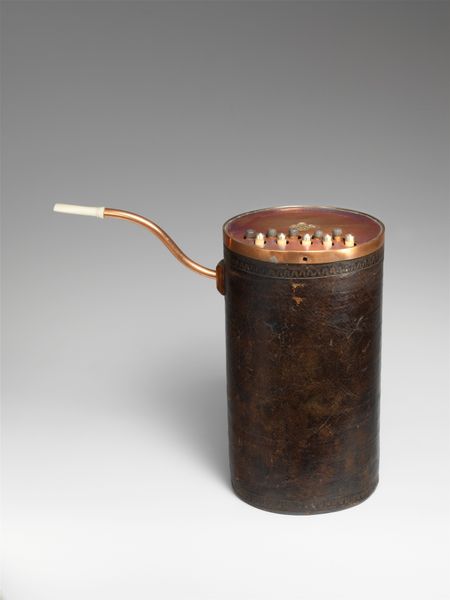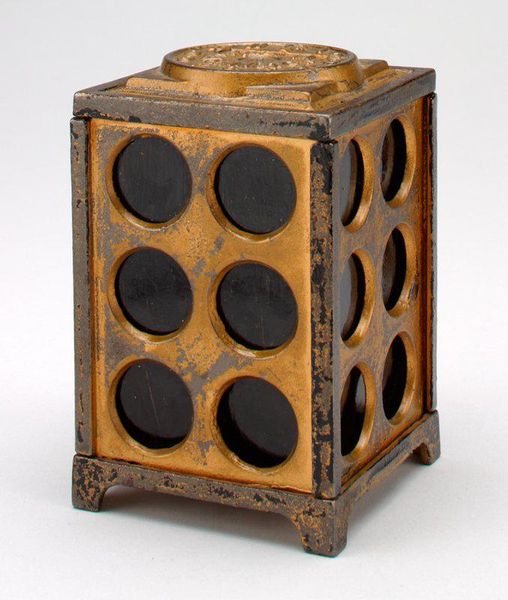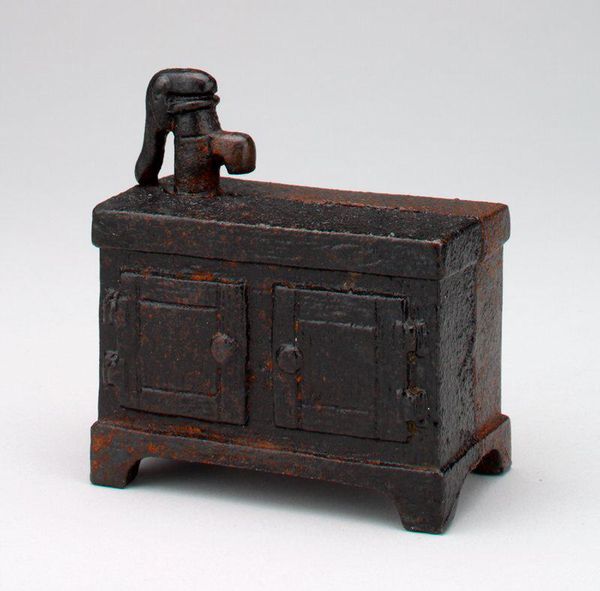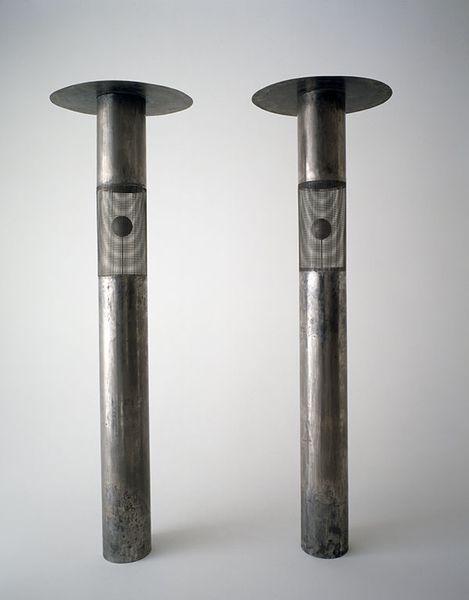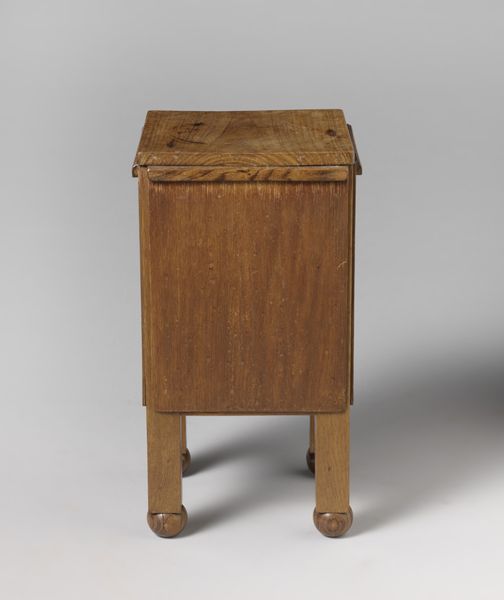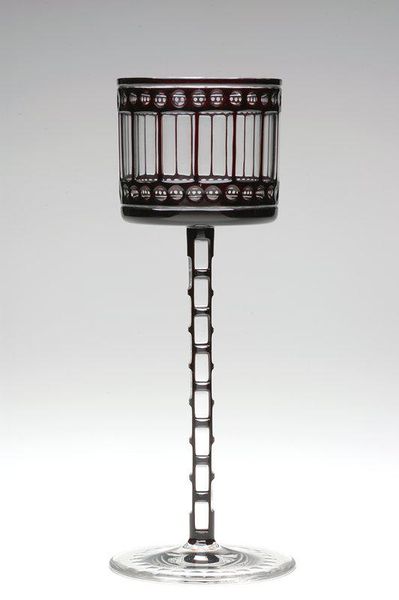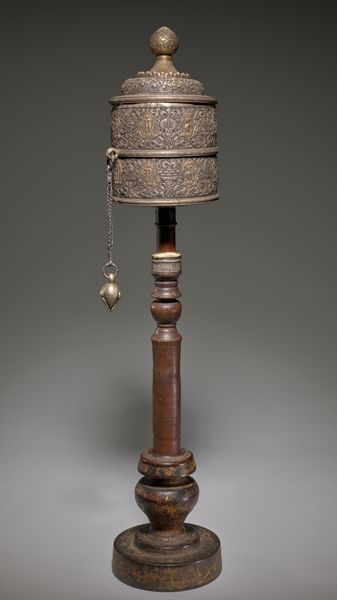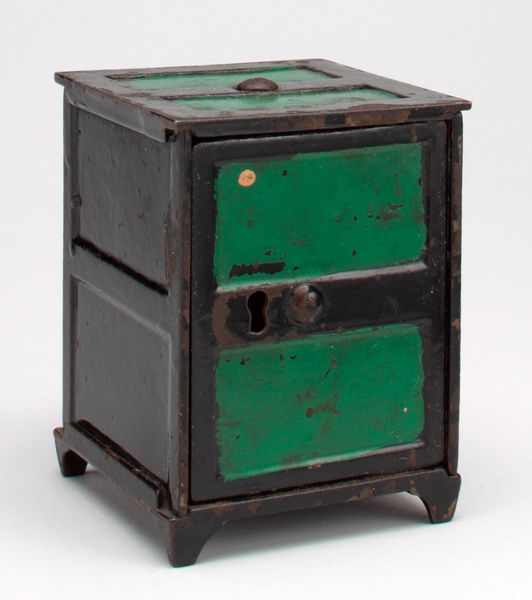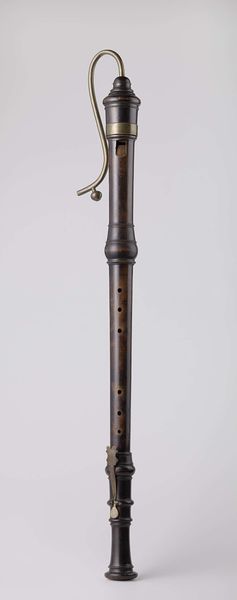
glass
#
still-life-photography
#
product displayed
#
glass
#
england
Dimensions: 13 3/16 x 4 3/4 x 1 7/8 in. (33.5 x 12.07 x 4.76 cm)
Copyright: No Known Copyright
These binoculars and case were made by F. Davidson & Co. around 1910, and they’re all about seeing—making the distant feel near. The leather case has this worn, crinkled texture, and a warm, caramel color, kind of like an old baseball glove. You can almost smell the leather, right? The binoculars themselves are black, sleek, and industrial. Look at the contrast between the organic, worn case and the smooth, precise instrument. Focus on that buckle. It's like a tiny face, all weathered and worn. It tells a story of use and time, doesn’t it? Makes me think of Man Ray's "Électricité" photographs, where everyday objects become surreal portraits through light and shadow. It’s as if these binoculars aren't just for seeing the world, but for seeing into the past, the kind of looking that gives rise to thought, to images. That’s what art does, too.
Comments
minneapolisinstituteofart about 2 years ago
⋮
Binoculars are not a new instrument--early European records record their development in the 17th century--but the "binocular Micro-Telescope" combined the magnifcation of a telescope with stereoscopic vision in one well-made instrument. Essentially two telescopes mounted together, it promised good field, definition, depth of focus, and remarkable perspective. A reviewer advised using the lower magnification of 14 until necessary to add the higher magnification eyepieces that upped the performance to 22 and 28 maginfication. High-performance with or without a stand, for landscape views or stargazing, they were the type of “field glasses” used during World War I. The central large ring is for adjusting overall focus, while the eye pieces can be adjusted individually.
Join the conversation
Join millions of artists and users on Artera today and experience the ultimate creative platform.
